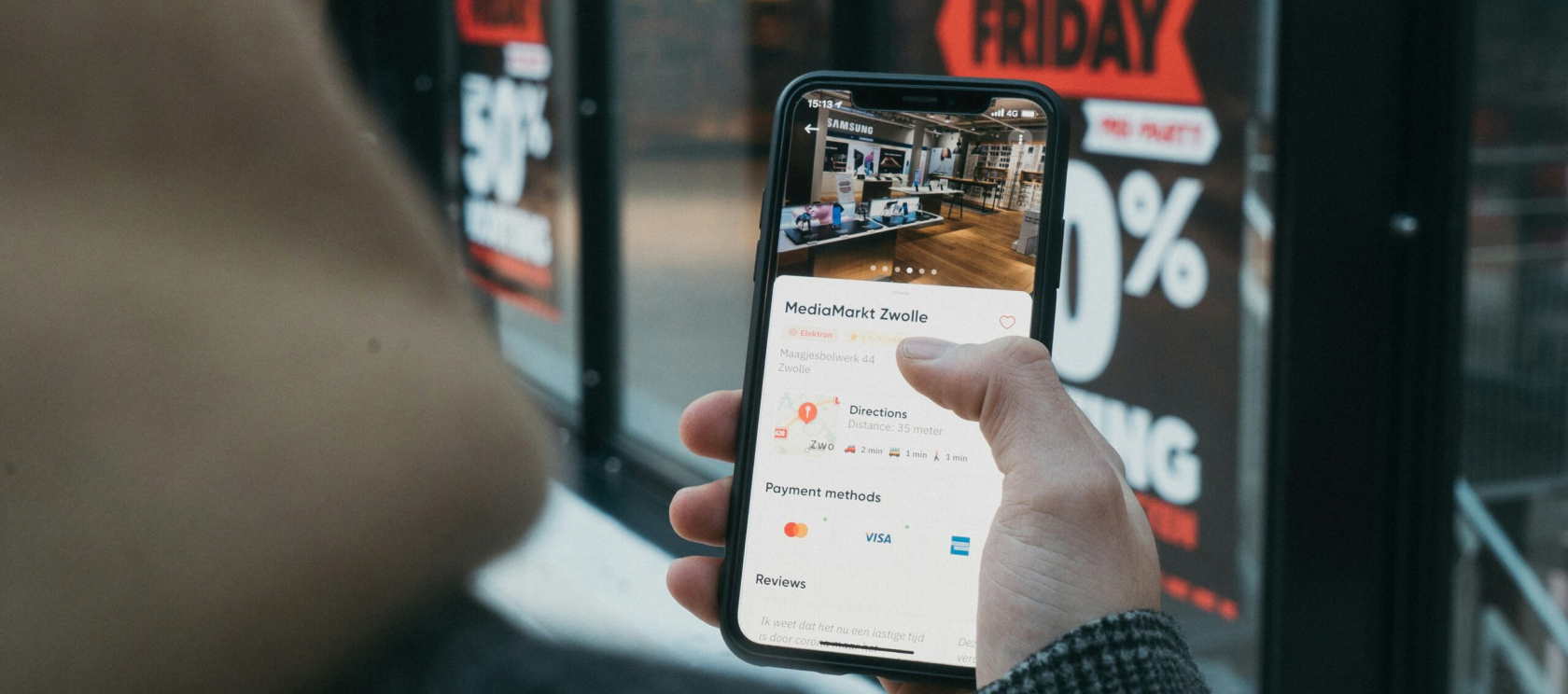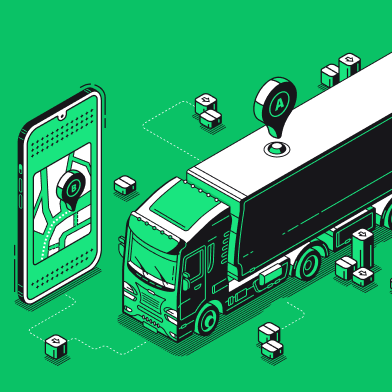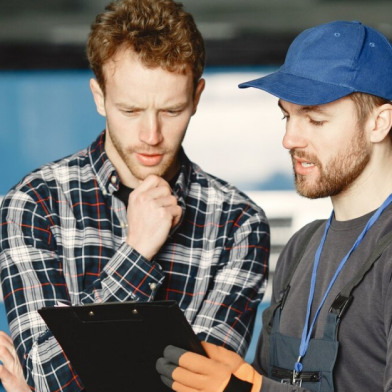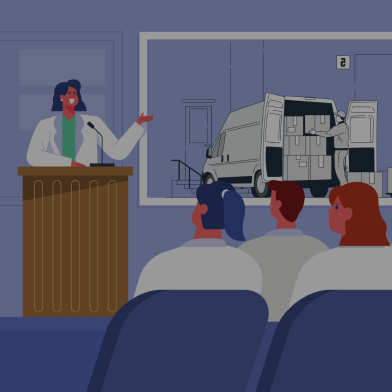Whether you’re running a busy airport, a high-tech hospital, a multi-event facility, a university campus, or a popular stadium, making your space easy to navigate is key to maximizing profitability. And implementing an indoor navigation solution can help to achieve just that.
Regularly ranked among the Top Custom Software Development Companies on Clutch, our team at Volpis has spent years creating custom navigation applications for companies across diverse industries. In this article, we want to explore the industries that benefit most from indoor positioning systems.
And if you have any questions about implementing indoor navigation for your business, we would be happy to answer all your questions and give honest advice. You can always reach out to us via info@volpis.com with any questions.
Industries benefiting most from indoor navigation solutions in 2025
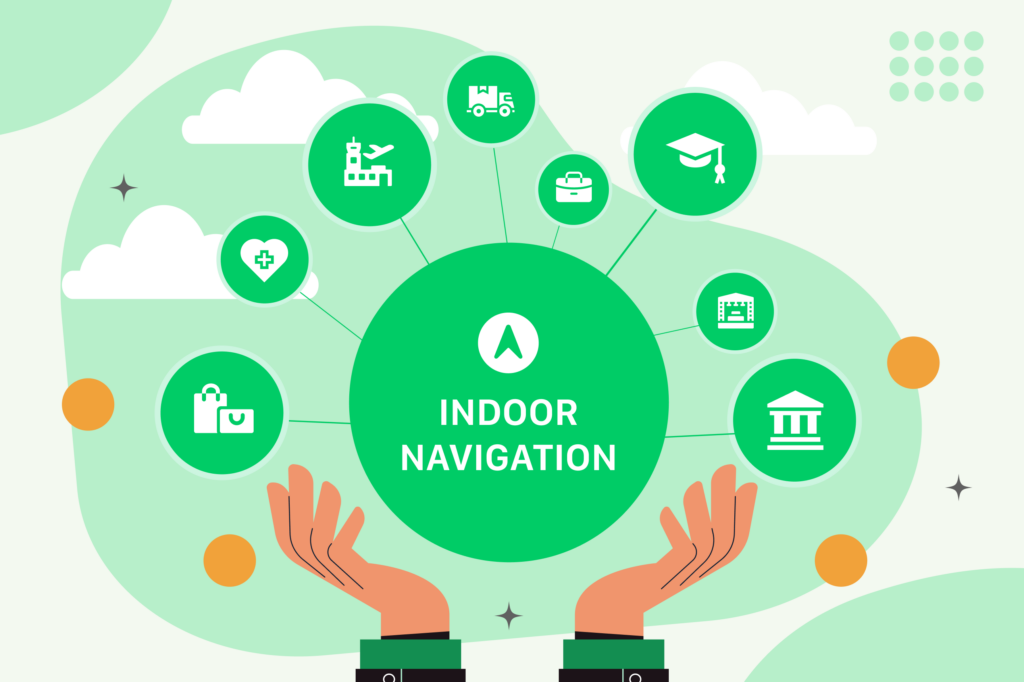
With tech like Wi-Fi, Bluetooth, beacons, and smart mapping, indoor positioning systems offer precise indoor location tracking and guidance. Indoor navigation solutions streamline operations, bring more excitement to customers, help manage resources better, and so much more.
Here are the top eight industries that are seeing major benefits from indoor navigation apps.
1. Retail industry: stores, shopping malls and supermarkets
Retailers love indoor navigation tech. Here’s why:
- Better customer experience: Shoppers can easily find stores, restrooms, and other amenities using their smartphones. Plus, they get personalized promotions based on their location, which encourages brand awareness and boosts sales.
- Business efficiency: Store managers can track foot traffic and optimize layouts and product placements. This data-driven approach improves sales and customer satisfaction.
- Navigation and assistance: Customers enjoy real-time indoor maps and turn-by-turn directions, making shopping more convenient and enjoyable.
For example, The Dubai Mall, with over 80 million visitors annually, uses an integrated location tracking system that helps customers navigate its vast 12.1 million square feet, finding hotels, services, and stores effortlessly. The Dubai Mall app provides turn-by-turn navigation, updates on trends and events, and rewards for shopping. With real-time notifications on offers and over 200 restaurants, visitors can fully enjoy all that the mall offers.
2. Healthcare facilities
Over 85% of patients ask for directions, and about 30% of first-time visitors get lost. This confusion can cause stress and affect patient well-being. It also costs hospitals a lot, with estimated annual labor costs of around $220,000 to help lost patients. Plus, it leads to missed appointments. And indoor navigation can make a big difference for both patients and staff. It saves money and ensures uninterrupted patient care. Also, hospitals can optimize routes for tasks, especially in emergencies in unfamiliar areas.
- Patient navigation: Patients and visitors can easily find their way to departments, clinics, and wards. This is very important in large hospitals where finding the right department can be tough.
- Asset location tracking: Hospitals can track medical equipment, ensuring essential devices are available when needed.
- Work efficiency: Healthcare professionals can quickly find patients, colleagues, and resources, ensuring fast response in critical situations.
For example, St. Clair Health, a member of the Mayo Clinic Care Network, created an interactive map available on their website, mobile app, and kiosks. This makes it easy for patients and visitors to navigate, ensuring they get the care they need. The St. Clair Health Wayfinding app provides step-by-step directions throughout the campus. Users can view indoor maps, search for specific departments or services, and navigate to their destination. The hospital can also send personalized messages and notifications based on where people are in the hospital. The app is helpful whether users are heading to St. Clair Hospital, the Dunlap Family Outpatient Center, the Professional Office Building, or just looking for a parking spot. The app works on-site and offers a virtual walk-through before arrival.
3. Transportation hubs such as airports and railways
Such complex indoor spaces like large transportation hubs are prime candidates for indoor navigation solutions due to their size:
- Passenger assistance: Travelers can receive real-time guidance to their gates, check-in counters, baggage claims, and other facilities, reducing the stress associated with navigating large airports.
- Operational benefits: Airport operators can analyze passenger flow data to optimize security checkpoints, manage congestion, and improve overall business efficiency. This valuable data helps in better resource allocation and enhancing the passenger experience.
- Emergency response: In case of emergencies, indoor positioning systems can guide passengers to the nearest exits and safety points, ensuring a safer indoor environment.
For example, LoungeBuddy App lets you find and book lounges in seconds. Just browse lounges, see photos, check amenities, and read reviews from other travelers. Add your airline status and memberships, and the app shows you which lounges you can use. You can even check if there’s a shower or a stocked bar before you get there.
4. Fleet management and logistics companies
The logistics and fleet management industry is using indoor navigation solutions to make operations smoother:
- Warehouse management: Indoor positioning systems implementation helps track inventory in large warehouses, ensuring goods are stored and retrieved efficiently, reducing errors, and speeding up order fulfillment.
- Fleet tracking: Fleet management systems use indoor navigation to monitor vehicles and equipment in large facilities, ensuring they’re in the right place at the right time.
- Employee productivity: Workers can quickly find items and equipment.
For example, Manhattan Warehouse Management Software lets you track employees and resources in a digital warehouse, and you can respond to people, equipment, and tasks in real time.
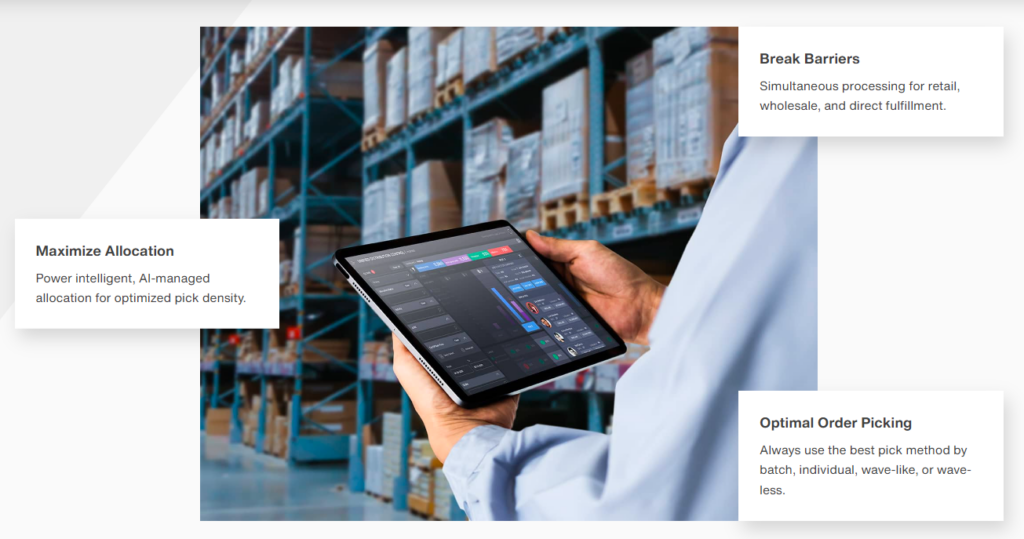
5. Corporate offices and business campuses
A Steelcase Workplace Survey found that 40% of employees waste up to 30 minutes per day looking for meeting spaces. Constantly seeking directions can be costly, with interruptions taking up to 25 minutes to refocus. Large corporate offices and business campuses benefit from indoor navigation solutions in several ways:
- Visitor management: People can use indoor navigation to locate meeting rooms, cafeterias, and other facilities.
- Employee productivity: With an indoor navigation app, it’s easy quickly find colleagues, meeting rooms, and resources.
- Space utilization: Facility managers can track usage patterns and optimize space allocation.
For example, Indoor Finders app provides office indoor wayfinding, desk reservation, meeting room scheduling, people locator, seating management, space planning, and work space reservation with an ultra-fast mobile app, kiosk, room display panel, and web portal in one comprehensive system.

6. Education facilities
Educational institutions, like universities, colleges, and big school campuses, are getting into indoor navigation solutions to improve the campus experience:
- Student and visitor help: New students and visitors can easily find their way around big and sometimes confusing campuses. Indoor navigation apps can give step-by-step directions to lecture halls, libraries, offices, and other important spots, making it simpler for newcomers to get around.
- Event organization: During events like orientations, open days, and graduations, indoor navigation systems can guide attendees to specific places, reducing confusion and ensuring everyone gets there on time. This is especially useful in big institutions with events spread out in different buildings.
- Accessibility: Indoor navigation can enhance accessibility for students and visitors with disabilities. By giving detailed directions that consider accessibility needs, such as elevators, ramps, and accessible restrooms, the system makes sure everyone can move around the campus easily.
- Safety and emergencies: In emergencies, indoor navigation solutions can give important information, guiding students and staff to the nearest exits or safe zones. This improves overall campus safety by ensuring quick and efficient evacuation routes.
- Resource management: Universities can use data collected from indoor navigation systems to analyze foot traffic patterns. This helps in managing campus resources better, like optimizing the placement of study areas, food services, and restrooms to meet demand.
For example, The University of Windsor’s campus is huge, covering over 125 acres or 5.4 million square feet. However, with the Campus Go app, students, staff, and visitors can easily navigate the campus, both inside and out. The app not only provides directions but also delivers real-time news, alerts, and emergency notifications.
7. Multi-event centers, sports facilities & trade shows
These complex venues really benefit from indoor navigation:
- Visitor experience: At big events like games, concerts, and expos, people can easily find where they need to go, like their seats, booths, or the bathroom. This helps them not get lost in the crowd.
- Event management: Organizers can use indoor navigation to manage big crowds better. They can direct people so there’s less crowding and everyone gets where they need to be on time.
- Exhibitor benefits: For trade shows, exhibitors can use indoor navigation to guide customers right to their booths. This gets more people to visit them and makes everyone happier.
- Accessibility: Indoor navigation also helps people with disabilities. It shows them the best routes to take, like where the elevators, ramps, and accessible seating are.
- Safety and emergency response: In emergencies like fires, indoor navigation can show people the quickest way out and where the safe zones are. This makes sure everyone gets out safely and quickly.
- Gain insights: Places can use indoor navigation to see how people move around. This helps them plan better for the future and makes things like bathrooms and food areas easier to find.
For example, the Orange County Convention Center, the second largest convention facility in the United States, has an app called OCCC Campus Wayfinding. It helps people find their way around the center with walking directions, maps, transportation info, and updates on things like parking and safety.
8. Cultural and historical facilities
Museums, galleries, and heritage sites can leverage indoor navigation solutions to enrich visitor experiences:
- Interactive and personalized tours: Indoor navigation systems can create personalized tour routes based on visitors’ preferences and time constraints, ensuring a more engaging experience tailored to their interests.
- Educational engagement: By integrating indoor navigation with augmented reality (AR) features, cultural and historical facilities can offer interactive educational content, including detailed information, videos, and AR experiences related to the exhibits.
- Accessibility: These solutions improve accessibility for all visitors, highlighting accessible routes, elevators, and amenities to ensure everyone can fully enjoy the exhibits.
- Operational efficiency: Operators can use visitor flow data to optimize exhibit layouts, manage crowding, and enhance the overall experience, ensuring that high-traffic areas are well-staffed and maintained.
- Safety and emergency response: In emergencies, an advanced navigation system can guide visitors to exits and safe zones, facilitating quick and organized evacuations for the safety of visitors and staff.
- Promotional opportunities: Museums can use indoor navigation apps to promote events, exhibits, and programs, with push notifications and interactive maps informing visitors of additional experiences and offerings within the facility.
For example, The Strong National Museum of Play offers an app that provides step-by-step directions throughout its exhibits and public spaces. You can check out maps, look for specific exhibits, and get directions.
How we can help you implement indoor navigation for your business
Volpis team has been leveraging the power of indoor positioning technologies to assist business owners in achieving unparalleled milestones. We are proud to have received Clutch Award as one of the top user experience companies in GPS, Navigation & GIS. We would be happy to build an exceptional navigation application for your business.

Our commitment to excellence is reflected in the glowing reviews from our customers, who consistently praise our dedication to delivering exceptional results. We invite you to explore our portfolio for a detailed look at the innovative software systems we have developed for our clients.
We’d love to answer any questions you may have. You can reach out to us via info@volpis.com with any questions or to explore how we can be part of your journey.
FAQs
Indoor mapping (indoor positioning technology) acts like a digital compass for indoor spaces, helping you visualize and orient yourself in complex places like malls, airports, and offices. It goes beyond just giving directions – it can provide personalized information, help track assets, guide you during emergencies, optimize usage of indoor spaces, and more.
Indoor positioning systems are used for campus building identification (e.g., universities, corporate facilities), shopping mall store detection, and tracking within large public spaces like airports or train stations, where identifying the general location of individuals or objects is beneficial.
Indoor navigation often relies on technologies like Bluetooth Low Energy (BLE) beacons, which offer precise indoor location tracking, and Wi-Fi signals, which can be used for positioning by measuring signal strength. These indoor positioning technologies are commonly used in combination to provide accurate indoor navigation solutions.
The Wi-Fi positioning system (WPS) is used when GPS doesn’t work well indoors. This indoor positioning technology measures the signal strength from wireless access points and uses a technique called “fingerprinting” to determine location.
GPS doesn’t work indoors because satellite signals are weakened, absorbed, and scattered by walls and objects. This causes errors in the system.

Kostya Khuta, the CEO of Volpis, is an expert in crafting custom software solutions for the Fleet Management, Logistics, and Transportation industry. With over 8 years of experience, he leads the way in delivering innovative and tailored solutions to meet industry-specific needs.
